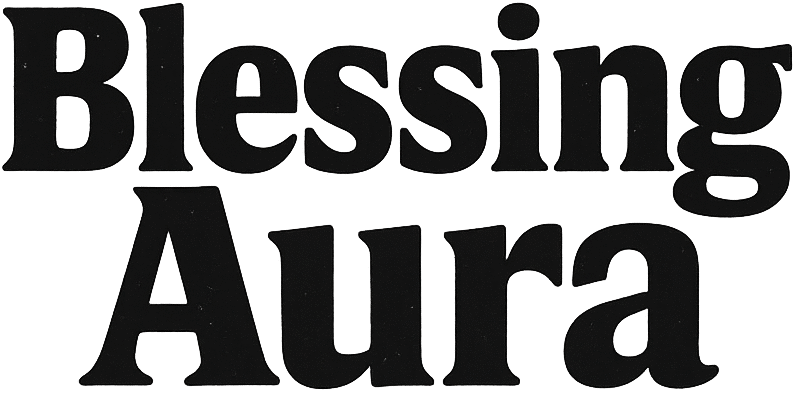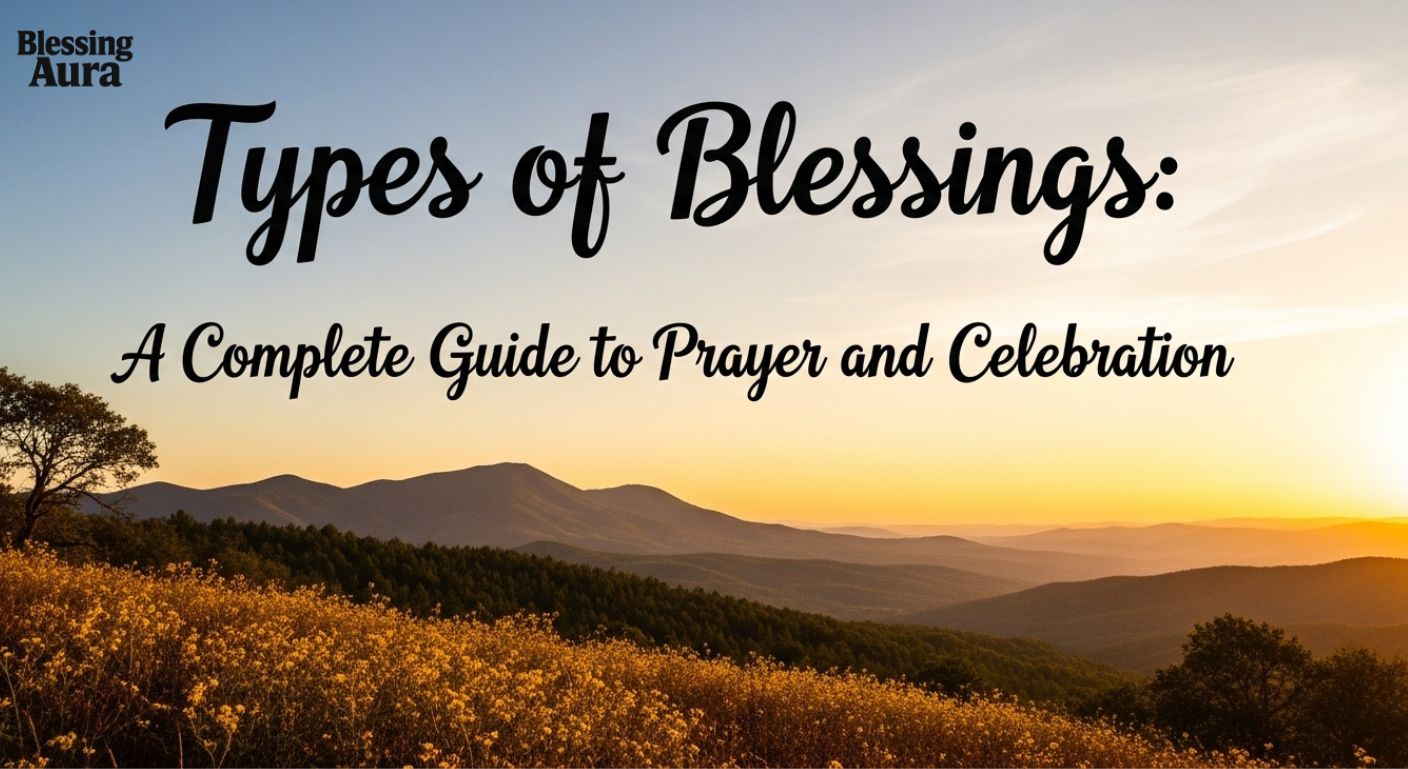Types of blessings are a beautiful way to ask for God’s presence and support in our lives. Whether at Mass, in a school, or during a quiet moment at home, a blessing connects us with something greater. It can mark a moment of joy, offer protection, or bring peace to someone’s heart. In the Catholic liturgy and other Christian prayer practices, blessings are rich with meaning and deeply personal.
Throughout the USA, people use blessing prayers in many ways—from school retreats and birthday prayers to honoring student leaders and welcoming new students. In this guide, you’ll explore many types of blessings, learn how to write them, and see how they are used in religious education and everyday life.
Overview
A prayer of blessing is a sacred way to invite God into a moment, a space, or a life event. It’s a chance to stop and speak to God with hope, gratitude, or request. In many homes, schools, and churches in the USA, blessings are a normal part of life. They are found at the end of Mass, during school prayer, and even in classroom rituals. A blessing can be long or short, spoken or sung, personal or shared.
The purpose is always the same: to ask God for protection, wisdom, and joy. In the Religion Curriculum P-12, especially in places like the Archdiocese of Brisbane, faith formation includes teaching children how to give and receive blessings. A blessing can help people feel connected and seen, especially in difficult or special times.
Blessing prayers can be prayed:
You can pray a blessing at almost any time. Some people pray one before a big test, a long trip, or a big life change. Others use them in times of grief or happiness. In Christian prayer practices, they are especially common at the start of a new beginning or during a celebration. Below is a table showing common occasions for blessings in daily life and liturgical celebrations.
| Occasion | Type of Blessing |
| Start of a school year | School prayer blessing |
| Birthday | Birthday prayer |
| Before a trip or retreat | Camp blessing or Retreat prayer |
| Before a sports event | Athletic blessing |
| To welcome new students | Community welcome prayer |
| After Mass or Liturgy | Final blessing |
| Farewell for teachers or students | Parting blessing |
| Holiday break | Seasonal blessing |
| Celebrating a sacrament | Scripture blessing |
People of all ages can benefit from blessings, especially students, teachers, and families. Each prayer makes space for Spirit, Jesus, and the Holy Spirit to enter and guide us.
A blessing during the liturgy (e.g. at the end of Mass)
One of the most common types of blessings happens during the Catholic liturgy, especially at the end of Mass. When the priest says, “The Lord be with you,” the community replies, “And with your spirit.” Then, the priest extends his hand and makes the Sign of the Cross, saying:
“May almighty God bless you: the Father, and the Son, and the Holy Spirit.”
The people respond, “Amen.” This blessing is not just words. It’s a sacred action, part of a liturgical celebration, that sends everyone out filled with Spirit, protection, and peace. This is often a model for other blessing prayer examples.
In churches across the USA, this moment is seen as a spiritual release. It marks the end of the celebration, but the start of carrying God’s wisdom into daily life. It’s powerful, clear, and speaks directly to the heart.
Prayer actions while praying a blessing
A blessing often includes special gestures. These blessing gestures are full of meaning. One common action is to raise your hand over the person you’re blessing. Another is to gently place your hand on their head or shoulder. These simple movements show support and the presence of Spirit.
During classroom rituals or school prayer, children might also make the Sign of the Cross. This reminds them that the Holy Spirit is with them. Some people use holy water, especially when entering a church or beginning prayer. These small acts help people feel part of a larger community, guided by faith and Jesus.
How to teach about blessings
Teaching blessings is a key part of religious education in many schools across the USA. In the Religion Curriculum P-12, teachers help students understand what a blessing means and how to pray one. They learn that when they say, “May God bless you,” it’s more than a polite phrase—it’s a sacred wish for peace, wisdom, or joy.
Children are also encouraged to remember times they’ve received a blessing, like during a liturgical celebration, at baptism, or at Mass. They also learn to give blessings. For example, when they say goodbye to a friend or welcome a new student. These lessons help build empathy and faith formation.
How to write a blessing
A good way to teach how to write a blessing is with the “YOU – WHO – DO – THROUGH” format. This simple structure helps even young students create personal and meaningful blessings.
- YOU: Begin by calling on God – “Loving God”, “God of light”
- WHO: Describe who God is – “You guide us with love”
- DO: Ask what you want God to do – “Bless our school”, “Give us strength”
- THROUGH: End with the name of Jesus – “We ask this through Jesus Christ our Lord, Amen”
This method teaches students how to express real care, ask for support, and connect to Scripture.
Examples of blessings
Every blessing is special, but here are a few common blessing prayer examples. These show how types of blessings can be used in many situations. Each one follows the “YOU – WHO – DO – THROUGH” style and can be changed to fit your own words or moment.
Blessing for a birthday
Loving God, thank you for the gift of life.
You bring joy and love to all your children.
Please bless (name) on their birthday.
Let their day be filled with laughter and protection.
We ask this through Jesus, your Son. Amen
Blessing for Mother’s Day or Father’s Day
God of gentleness, you care for us like a parent.
You are with us in every step of life.
Please bless all mothers and fathers.
Give them strength, peace, and deep joy.
Through Jesus, our brother and guide. Amen
Blessing for School Student Leaders
Spirit of wisdom, thank you for our student leaders.
They help guide our community and bring hope.
Bless them with courage, respect, and wisdom.
Be with them in every choice they make.
We pray through Christ, our Lord. Amen
Blessing for a school camp or retreat
God of light, you lead us into new places.
Be with us as we go on this school retreat.
Keep us safe, joyful, and open to learning.
Bless our fun, rest, and friendship.
We ask this through Jesus. Amen
Blessing to welcome a new student
Loving God, you welcome all with open arms.
Bless (name) as they join our school community.
Help them feel safe, happy, and part of the group.
We welcome them with hearts full of kindness.
In Jesus’ name we pray. Amen
Blessing for a sports event
God of creation, you made us strong and full of life.
Bless our celebration today in this sports event.
Keep everyone safe, fair, and full of team spirit.
Help us to enjoy and support each other.
Through Jesus, our guide and brother. Amen
Simple short blessings
Short blessings are easy to remember and can be used in many places—at the end of the day, after classroom rituals, or during school prayer. Here are some that are often used in pastoral care and religious education:
May the peace of Christ guide our day. Amen
May the Spirit of God be in our hearts. Amen
May God’s love surround us as we learn. Amen
May God keep us safe in His care. Amen
Sung blessings
In many schools, sung blessings are used to end the day or a liturgy. They make the prayer more joyful and easy for students to remember. Here are some well-loved songs in the USA:
“Lord Bless Me on this Day” by John Burland
“An Irish Blessing (Wherever I Go)” by Andrew Chinn
“May God Bless and Keep You” by Christopher Walker
Singing a blessing creates a gentle and peaceful mood. It’s perfect for any celebration, especially when shared with the whole community.
FAQ’s
What are the different types of blessings in the Catholic faith?
The types of blessings in the Catholic faith include blessings at Mass, personal prayers, and special moments like birthdays or school retreats. Each one invites God’s love and protection.
How can children learn about the types of blessings?
Children can learn the types of blessings through school prayer, classroom rituals, and by writing their own blessings in religious education classes guided by Scripture.
Are there types of blessings for school events and leaders?
Yes, there are types of blessings made for student leaders, school camps, and retreats. These blessings support faith formation and the growth of strong school communities.
What role do sung blessings play in different types of blessings?
Sung blessings are one of the joyful types of blessings used in school settings. They help students pray together and feel God’s Spirit in a calm, loving way.
Can families create their own types of blessings at home?
Families can write simple types of blessings for birthdays, meals, and new beginnings. These prayers build connection and remind everyone of God’s constant love and care.
Conclusion
The Types of Blessings help bring God’s love into many moments. From classroom rituals to school retreats, each blessing brings peace, joy, and support. We see the Holy Spirit at work in student leaders, birthdays, and liturgical celebrations. These Types of Blessings remind us that God is always near.
Families, schools, and churches can all create different Types of Blessings. They can be spoken, sung, or written. Blessings during Mass or a school prayer can shape hearts with faith. Teaching children the Types of Blessings helps build strong community and deeper trust in Jesus. Through prayer, we give thanks and ask for God’s help. These simple words can carry great power. Types of Blessings fill our lives with hope and protection. Each one ends with a strong and faithful Amen.

Welcome to Blessing Aura! I’m Muhammad Anas, an Digital Marketer and Ebay Dropshipping Expert with 1 year of experience, I help business, brands and store to grow online. My goal is to run ads and sell effective products for everyone, Let’s achieve more together!

